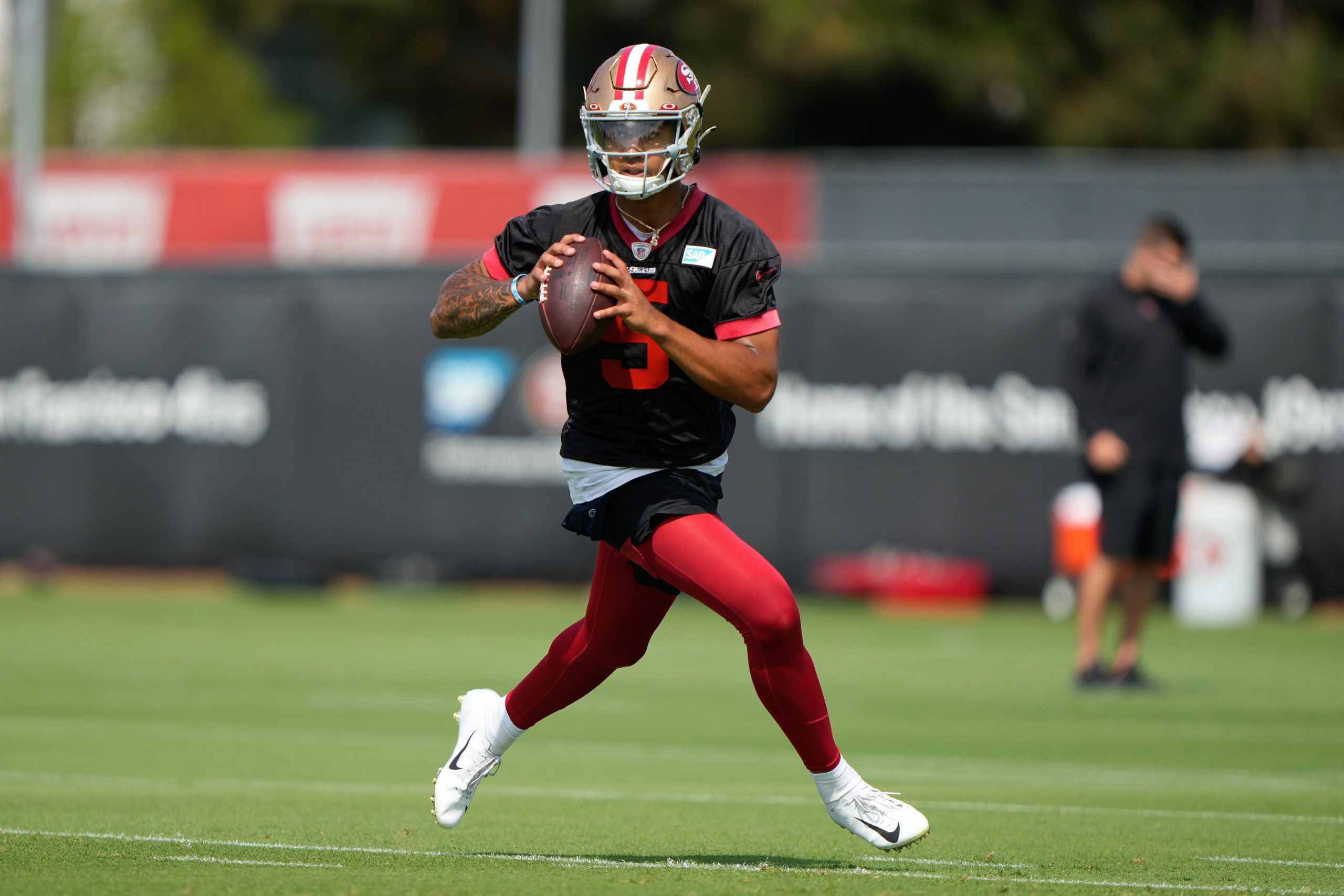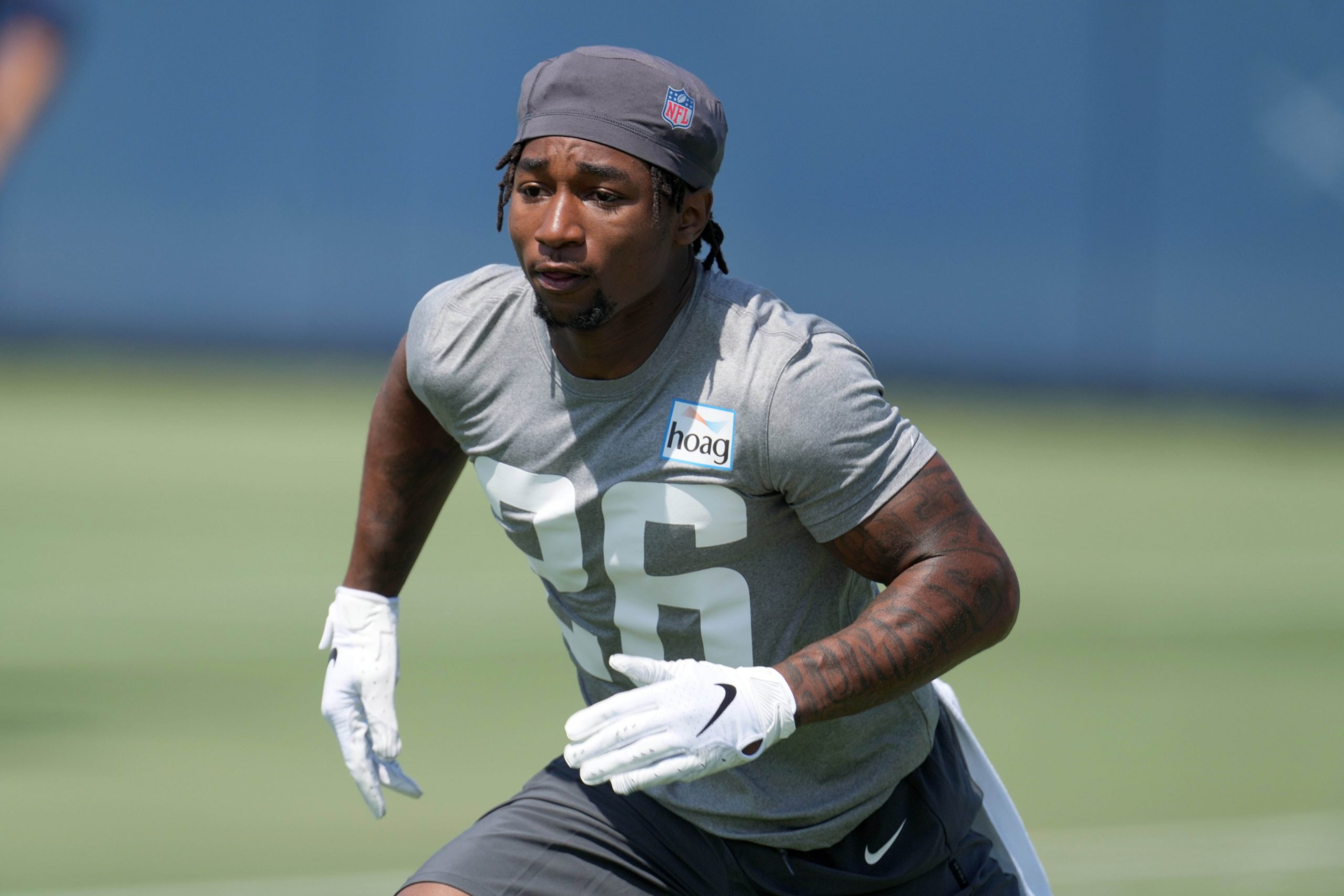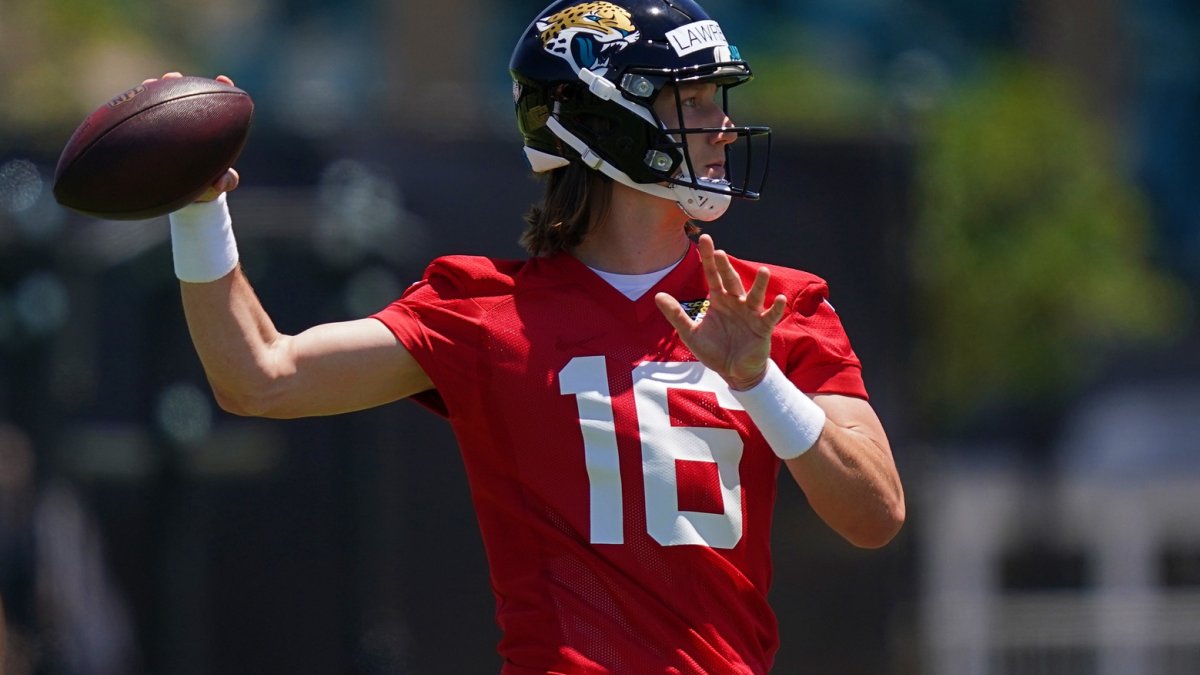The time has finally come for the first week of the 2021 NFL preseason — one of the most heavily anticipated preseasons in recent memory.
Fans and team executives alike will be getting their first taste of a 2021 NFL Draft class that includes five first-round rookie quarterbacks and multiple “generational” players at other positions. So, what better way to prepare for Week 1 of the NFL preseason than to roll through some predictions for this unique rookie class.
Below are nine predictions — some bold, some not so bold — involving the rookies from the 2021 draft class.
Subscribe to
Trevor Lawrence earns the highest PFF grade by a Jaguars QB in over a decade
This would be a major hot take if it were about any other rookie-franchise combination, but we're talking about one of the best prospects of the last decade in his first year with the Jacksonville Jaguars. Over the last 10 years, the highest PFF grade earned by a Jags quarterback is the 70.3 Gardner Minshew posted for his 2019 rookie campaign.
It’d honestly be more of a surprise if Lawrence didn’t surpass that mark out of the gate. He’s the most complete quarterback prospect PFF has ever seen. Timing, arm strength, mobility, pocket presence — he has it all. It’s why he is the only quarterback in the PFF College era who has recorded a PFF grade above 90.0 as a true freshman, sophomore and junior.
Kyle Pitts joins Mike Ditka as the only rookie tight ends to surpass 1,000 receiving yards
This one is a bit spicier.
PFF's fantasy projections have the Atlanta Falcons‘ first-round pick racking up 851.8 receiving yards in Year 1 of his NFL career, which would be a top-five total for a first-year tight end. It’s safe to say that a lot is expected of Pitts, a true unicorn at the tight end position, but he has the kind of rare skill set to surpass those expectations.
The Florida product shattered the PFF College record for the best single-season receiving grade by a tight end in his age-20 season with a mark of 96.1. He has the movement skills of a wide receiver and successfully destroyed press-man coverage on the outside in college as though he was one.
Justin Fields finishes top-10 in deep-passing grade
Fields' deep-passing ability is just one of the many alluring traits that made him a top-three talent. In fact, very few quarterbacks in the PFF College era have been able to match the Ohio State product's work on 20-plus-yard passes.
That deep-ball production is something the Chicago Bears haven’t had of late.
The downfield passing offense was virtually non-existent in the Mitchell Trubisky era of Chicago football. The Bears put up just 40 passing touchdowns on 10-plus-yard throws across those four years, 30th in the NFL over that time. Their quarterback room ranked third-to-last in expected points added (EPA) per pass attempt and second-to-last in uncatchable-pass rate on those same throws.
That’s not going to be an issue with Fields. The former Buckeye put up a career big-time throw rate of 8.4% during his time in college, the highest mark by a Power Five quarterback since PFF College's inception in 2014. His career passing grade on 20-plus-yard throws in college stands as one of the five best among those in the Power Five with at least 100 such attempts.
Expect Fields to provide a downfield spark when he takes over the starting job.
Christian Barmore is the highest-graded rookie defensive lineman
Barmore, PFF’s 12th-ranked prospect in the 2021 rookie class, somehow ended up sliding into Round 2 because of reports that he didn’t respect or seek out coaching. But that hasn't been the case in New England so far. In fact, the Alabama product has been getting plenty of reps with New England’s first-team when he’s been healthy enough to partake.
This isn’t a surprise to hear, given that he was by far the most NFL-ready defensive lineman in his draft class.
His physical tools and sheer production against college football’s best make him the top choice to be the No. 1 rookie defensive lineman this year. Yes, he had a slower start than expected in 2020 due to a preseason injury, but he turned on the jets when the time came to go up against Notre Dame and Ohio State in the College Football Playoff, recording a 91.3 pass-rush grade and 12 pressures against the Irish and Buckeye offensive lines — the best CFP pass-rush performance since its inception in 2014.

Trey Lance racks up 500+ designed rushing yards
Lance seems destined to be loaded up with designed runs in Kyle Shanahan’s offense. The San Francisco 49ers head coach has publicly stated that the third overall pick will play for the team as a rookie, whether he is the starter or not. But right now, it’s looking like the starting job will be his sooner rather than later.
There are reasons to be concerned with his accuracy and ability to win with his arm every week, especially early on, but few players at the position can match what he brings with his legs.
The FCS product found immense success in the designed run game at North Dakota State, picking up a 10-plus-yard gain on 32 of his 154 designed rushes. Obviously, the level of competition has a lot to do with that, but it goes to show what he can accomplish on the ground.
Lamar Jackson and Cam Newton are the only quarterbacks who have racked up over 500 yards on designed runs at the NFL level since PFF began tracking the metric. Lance could very well join the two.
Azeez Ojulari is the only rookie edge defender with a 70.0-plus pass-rush grade
This rookie edge class is full of raw players who ooze potential because of their physical tools. Yet, many who were taken early on in the 2021 NFL Draft will take some time to get acclimated.
Ojulari is decidedly different than the rest. He could make a dent for the New York Giants sooner than anyone else in his class despite not having the size or power of some of the Day 1 prospects. He is an advanced pass-rusher who put up monster production numbers in the SEC; his timing and pass-rush plan paired with his speed, length and cornering ability make him a force to be reckoned with. The Georgia product earned a 91.7 pass-rush grade in 2020, second among all FBS edge defenders.
Both Najee Harris and Travis Etienne produce top-10 receiving grades among RBs
If a running back is going to generate above-average value relative to the rest of the position, they must be able to make plays in the passing game. And that’s something Round 1 backs Harris and Etienne routinely did at the college level.
Harris has an uncommonly large catch radius for a running back. The 6-foot-2, 230-pound back boasts 33 ⅜-inch arms that sit at the 99th percentile among prospects at the position historically. He established himself as one of the more reliable receivers in college football in 2018 and 2019 at Alabama, too, dropping just two of his 75 catchable targets and generating the highest passer rating when targeted among FBS running backs (131.9).
Receiving was Etienne’s biggest weakness early on at Clemson, but he worked on it to become one of the best backs in that facet in his final season. His 90.9 receiving grade in 2020 led all FBS players at the position.

Asante Samuel Jr. is the highest-graded rookie corner
“He’s going to play outside plenty whether we’re in four DBs or five or six… But we’re trying to cross-train him inside so that you’re putting your best combination out there. The fact that ‘Sant has that type of skill set just increases our ability to be flexible, multiple.” — Brandon Staley on Samuel seeing first-team slot reps
Samuel carved out a substantial role in the Los Angeles Chargers secondary this offseason. It's no surprise, considering his skill set — he is the perfect fit for Staley’s system.
Samuel is a great athlete who processes the game at a high level. The 5-foot-10, 180-pound cornerback racked up the second-most forced incompletions in the Power Five from 2018 to 2020. The 47th overall pick of the draft, Samuel was meant for an off-zone, versatile role like this one, and he could see greater success than other corners in the class because of it.
Four rookie wide receivers generate more than 2.00 yards per route run on the year
Only two draft classes in the last decade have ended Year 1 with four wide receivers averaging 2.00-plus yards per route run: the 2011 group with Julio Jones, Doug Baldwin, Randall Cobb and A.J. Green and the 2019 class with A.J. Brown, Deebo Samuel, Hunter Renfrow and Terry McLaurin.
This year, the talent is there to reach that mark.
Cincinnati Bengals wideout Ja’Marr Chase may not be lighting up camp like other rookies, but there shouldn’t be a concern with him taking longer to get acclimated. The LSU product looked like a grown man among boys at times in 2019 at just 19 years of age, and it showed at the line of scrimmage, in contested scenarios and after the catch. Chase broke 22 tackles on 84 receptions in 2019 and still ranks first in touchdowns against press coverage since 2019 (12), even though he opted out of the 2020 season.
Philadelphia Eagles‘ DeVonta Smith wasted no time showing that his Heisman Trophy-winning 2020 campaign — which shattered the PFF College receiving grade record — was no fluke before suffering a minor injury at camp. He may not have the frame of a star receiver, but he has everything else to become one. His route-running, fluidity, release package and ball skills are all NFL-ready.
Meanwhile, Jaylen Waddle has been showing off how electric he can be for the Miami Dolphins. The rare athlete can get behind defenses with ease for an open deep ball and cook the opposition on screens with his after-the-catch ability. Waddle's all-around athleticism helped him rack up a 15-plus-yard gain on over 36% of his targets in his three-year career at Alabama, a rate that led all FBS wide receivers by four percentage points over that period.
Rashod Bateman of the Baltimore Ravens (when he returns), Elijah Moore of the New York Jets and Rondale Moore of the Arizona Cardinals are also candidates to hit that high-level production right out of the gate. Between those five and any other surprise breakouts, the rookie wide receiver class could have four high-earners in Year 1.



 © 2025 PFF - all rights reserved.
© 2025 PFF - all rights reserved.